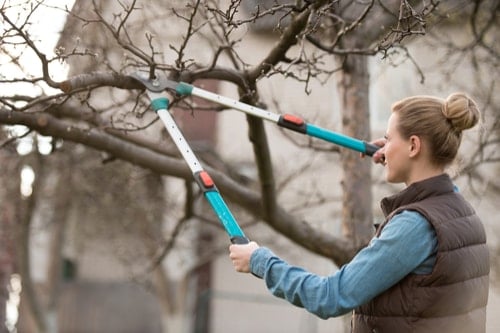
By Erik L Walter – Partner
Legal Aspects to Consider Before Cutting Trees
While trees may be the most prized possession on someone’s land, they can also be one of the largest nuisances to others. Issues include falling leaves, falling branches, limbs hanging over property lines and trees falling down on neighboring properties.
With all of this noted, the question truly becomes: “to cut or not to cut?”
This article attempts to give a homeowner some insight before taking any action that may cause more problems than the action was worth.
Take the necessary precautions before cutting trees
Under Ohio law, trees that border fence or property lines and hang over can be trimmed back to the property line. However, before doing so, you should take several precautions before taking any action and to maintain civility between you and your neighbor and to make sure you don’t unintentionally violate the law.
Determine your property lines
First, you need to be sure of your property lines before trimming or cutting down a tree. If you cannot locate your property line markers, you should pay for a simple survey and ask your surveyor to place new pins on the property lines. This not only ensures who owns the tree but also clearly delineates your property line from your neighbor’s before any cutting takes place.
Discuss with your neighbor
Second, you should always ask your neighbor before taking any action on a tree.
One of the largest problems in this area of law is that one neighbor unilaterally decides to take action which inevitably leads to a “Hatfield and McCoy’s” type of situation.
While the law may favor one party over the other, the civility and peace between neighbors are more important than a rash decision to take action without informing a neighbor.
This simple, but often disregarded step can save a large amount of money as lawsuits in this area can cost in excess of $25,000 to litigate.
If ownership is shared, both parties must agree
Next, under Ohio law, if a tree borders both properties, meaning that half is on one property and a half on the other, it is presumed to be owned by both landowners. Therefore no action can be taken to cut the tree down unless both parties agree.
If one party disagrees, you may be forced to either leave the tree or seek a determination from a court as to what action can be taken.
However, to the extent than any branches hang over the property line and extend onto your property, those branches can be trimmed.
Even so, any damage or death that ultimately occurs to the tree as a result of that trimming could cause you to be liable for damage to the tree(s).
Specifically, ORC 901.51 provides:
No person, without privilege to do so, shall recklessly cut down, destroy, girdle, or otherwise injure a vine, bush, shrub, sapling, tree, or crop standing or growing on the land of another or upon public land. >
In addition to the penalty provided in section 901.99 of the Revised Code, whoever violates this section is liable in treble damages for the injury caused.
Accordingly, not only does this statute relate to trees, but also covers vines, brush, shrubs, and crops.
Triple Damages
What makes this so perilous is that the statute provides that any action shown to be “without privilege” [permission] and “reckless” entitles the damaged party to treble or triple damages. This means that if the value of the tree or damage done is $1,000.00 (a hypothetical example) the total damage would be $3,000.00.
Potential criminal charges
Further, ORC 901.99 provides that any person found to be responsible under ORC 901.51 is guilty of a misdemeanor of the fourth degree. So, not only can one improperly cutting down or damaging trees be responsible for triple damages, but potentially criminal charges.
It must be noted that while the statute does cite to possible criminal charges, there is no prerequisite placed upon a landowner to first file a police report. However, the filing of a police report, while damaging to neighborly relations, does add a layer of evidence to potential future litigation.
Wrapping up
In conclusion, before cutting any tree that appears to be on or over property lines, certain precautions should be taken. While this article lays out the law regarding this issue, it is always best to approach your neighbor first and try to resolve the matter peacefully.
If that does not work, it is highly recommended that you seek the advice of a lawyer who may be able to resolve the dispute through a simple letter. While the letter may cost you some money, it can save you the heartache, strained relations with your neighbor and thousands of dollars in potential litigation in the end. If it does not, litigation may be the only option.
The information presented in this post is not legal advice and does not form a lawyer/client relationship. Laws and circumstances can differ and change.
Please contact us for a personal review of your situation






